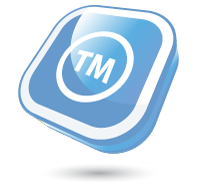4 Things Business Owners Should Know About the Trademark Clearinghouse
As a new internet era dawns with the continuous roll-out of new gTLDs (“generic top-level domains), business owners interested in protecting their valuable trademark rights and existing domains should be aware of four things regarding an organization that may not be well-known to most: the Trademark Clearinghouse (“TMCH”).
1. What is the TMCH?
The TMCH is the linchpin of ICANN’s gTLD program and acts as the rights protection mechanism of the framework. ICANN, short for the “Internet Corporation for Assigned Names and Numbers,” is the organization that is basically in charge of coordinating the Internet’s underlying address mechanism, the Domain Name System (“DNS”).
At its core the TMCH is a centralized database of verified trademarks submitted by rights owners connected to all Top Level Domains (“TLDs”) that launch.
2. The TMCH is the Gateway to Securing gTLDs
gTLDs are secured by first registering your trademark with the TMCH, which then verifies the information entered and adds your trademark to their database. Once verified, trademark owners receive a unique “Signed Mark Data” (“SMD”) file which enables use of the TMCH’s “Sunrise Services.”
“Sunrise Services” allow TMCH-registered trademark owners the ability to priority-register new gTLDs before the general public during 30-day “Sunrise Periods.” Each new gTLD is required to hold a Sunrise Period for this purpose.
3. The TMCH Offers a “Trademark Claims Service”
TMCH’s “Trademark Claims Service” is offered for free for every trademark successfully registered and verified by TMCH, and essentially notifies owners when a third party has registered a domain name in a gTLD that exactly matches their trademark. The service is broken into two parts: the initial “90 day Trademark Claims Period” and the “Ongoing Notifications” service.
4. The TMCH Offers “Dispute Resolution Procedures”
The TMCH has a Dispute Resolution Process that may be invoked for three types of disputes:
- Trademark Owners vs. the TMCH for rejected Trademark Record registrations;
- Third Parties (which can include Trademark Owners) vs. the TMCH for allegedly incorrectly accepting a Trademark Record;
- Third Parties vs. allegedly invalid Trademark Records
The second type of dispute contemplates situations where two Trademark Owners have the same Trademark Record in the TMCH database and one Owner wishes to contest the other’s Record. The third type of dispute allows for situations where (1) the trademark in question is no longer valid or (2) the Trademark Owner in the Record is no longer the owner of the trademark. The TMCH’s Dispute Resolution Procedures, along with ICANN’s Uniform Domain-Name Dispute Resolution Policy (“UDRP”), are alternative weapons in a trademark owner’s arsenal against infringers and cybersquatters.
While not free ($150 per mark annually), the TMCH’s services are comprehensive in the realm of protection for internet trademark assets, and should be considered by all trademark owners with an internet presence. If you have questions about trademark rights and enforcement, contact Creative Vision Legal.

